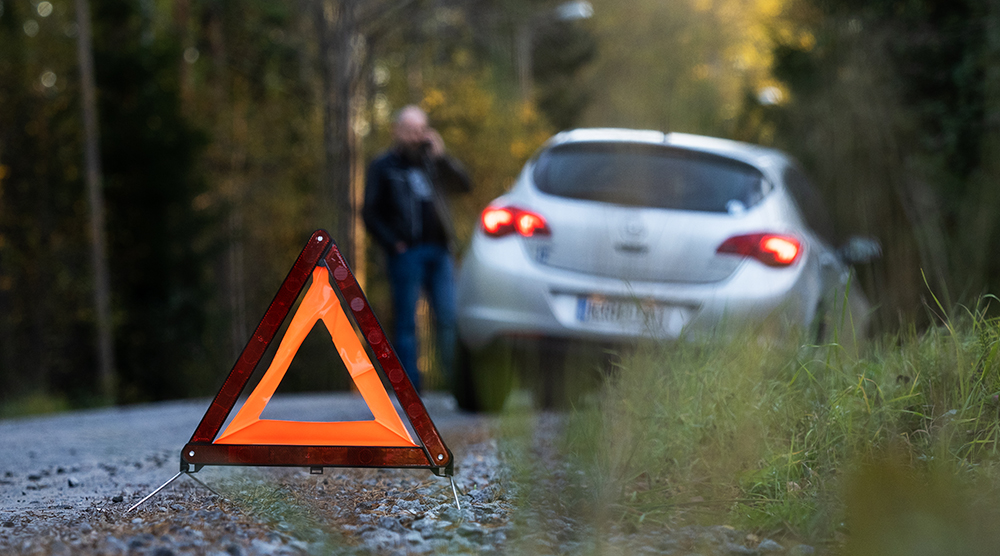ERC operators provide instructions on what to do at the scene of an accident

According to a survey by the Finnish Road Safety Council (Liikenneturva), one in four Finns do not feel that they know what to do at the scene of an accident. The instructions provided by an ERC operator can save lives in an accident situation.
According to the Finnish Road Safety Council’s survey (page in Finnish), 75% of Finns feel that they know what to do at the scene of an accident. However, 25% of respondents either could not answer or disagreed with the statement. It is understandable that an accident situation can cause uncertainty, but it is even more important to be able to rely on professional help.
In Finland, ERC operators are trained not only to locate emergency callers, assess risks and dispatch help to the scene, but also to instruct people on what to do in emergency and accident situations. The instructions provided by ERC operators are designed so that they can be carried out by a layperson. They can include instructions on how to stop bleeding, open the airway or move a patient in an emergency.
“Arriving at the scene of an accident can be a rare occurrence on the road, one that not everyone will ever experience. Nevertheless, every road user should brush up on their first aid skills and think about what do at the scene of an accident to make things easier and safer for everyone involved,” says Training Instructor Erkka Savolainen from the Finnish Road Safety Council.
Do not drive by
Almost one in four respondents to the Finnish Road Safety Council survey had been in a situation where a road accident had occurred and rescue services had not yet arrived. The vast majority of respondents said that they stopped to check what kind of help was needed and stayed to ensure that help arrived, as they should. However, approximately one in ten did nothing.
In order to get help to the scene of an accident, it is extremely important to stop, call 112 and follow the instructions provided. Only by stopping at the scene can the right kind of help be dispatched to the right location and the necessary additional information be passed on to the authorities. Stopping at the scene is also a prerequisite for the potential patient to benefit from life-saving instructions.
“Helpers also need to keep their own safety in mind at the scene of an accident. This includes positioning your own vehicle safely and activating its hazard lights so that it does not cause further accidents or endanger other traffic and so that rescue personnel can access the scene,” Savolainen points out.
“The warning triangle should be placed 100–300 metres from the nearest car or around a bend if there are visual obstacles on the road.”
What to do at the scene of an accident
• Ensure your own safety first and prevent further accidents. If you are driving, turn on your hazard lights and stop the car in a safe place.
• Find out what has happened and call 112 to report the emergency. The ERC operator will assess what kind of help is needed at the scene. Help the operator by answering the questions that they ask.
• Follow the instructions provided by the ERC operator. Wait for the professionals to arrive at the scene of the accident.
See also
Distress may turn to joy in a call involving childbirth
Social emergencies require time
Fourteen-Year-Old’s Actions Prevented Greater Damage
Demanding ERC operator work requires extra investment in wellbeing at work
Paula has been working for the Emergency Response Centre Agency for ten years: first as a communications specialist for nine years and then as a wellbeing at work specialist from the start of 2024. By looking after staff wellbeing, she feels that she is doing meaningful work and is able to indirectly contribute to the safety of Finland as a whole.
Reputation of the Emergency Response Centre Agency remains strong
According to the Reputation&Trust study, the reputation of the Emergency Response Centre Agency is ranked fourth among public administration agencies. The public felt that the Agency performed best in the responsibility and products and services dimensions.
Wellbeing is built together
Competent, committed and content staff are the Emergency Response Centre Agency's most important asset and strategic priority. The Agency’s new wellbeing at work programme places greater emphasis on developing competence in work capacity management and career management, among other things.
Distress may turn to joy in a call involving childbirth
The Emergency Response centre sends assistance to more than 2,240 assignments involving childbirth each year. For the ERC operator, the experience is unique, as the sounds of new life can be heard at the other end of the line.
ERC operators provide instructions on what to do at the scene of an accident
According to a survey by the Finnish Road Safety Council (Liikenneturva), one in four Finns do not feel that they know what to do at the scene of an accident. The instructions provided by an ERC operator can save lives in an accident situation.



